PRS Silver Sky Review
After two years of exhaustive R&D, March 2018 saw one of the industry’s worst-kept secrets become the most talked-about guitar in recent history. Depending on whom you believe, John Mayer and Paul Reed Smith’s Silver Sky is either ‘the future of a classic design’ or just another Strat copy with the ‘wrong’ headstock. We play the guitar at the centre of an online storm and speaks to the man who brought John Mayer’s vision to life…

In just 45 minutes the manufacturer’s website receives almost a year’s worth of traffic and buckles under the strain. Social media fizzes with love and hate, enthusiasm and disdain in equal measure. Sales outstrip initial projections to such a vast extent that employees will have to work around the clock to fulfil orders. It sounds like the combination of a new iPhone launch and a major election campaign but in reality, ladies and gentlemen, it’s the announcement of a brand new electric guitar, right here in 2018.

But guitar heroes are dead in the water, right? Primitive instruments of wood and wire are consigned to history as glossy pop and R&B dominates the airwaves and programmed beats blast out of mobile telephones against the backdrop of the strobing clatter of subway cars. Right? If that’s the case, John Mayer didn’t get the memo. And neither did his millions of online followers.
Read our interview with Paul Reed Smith here.
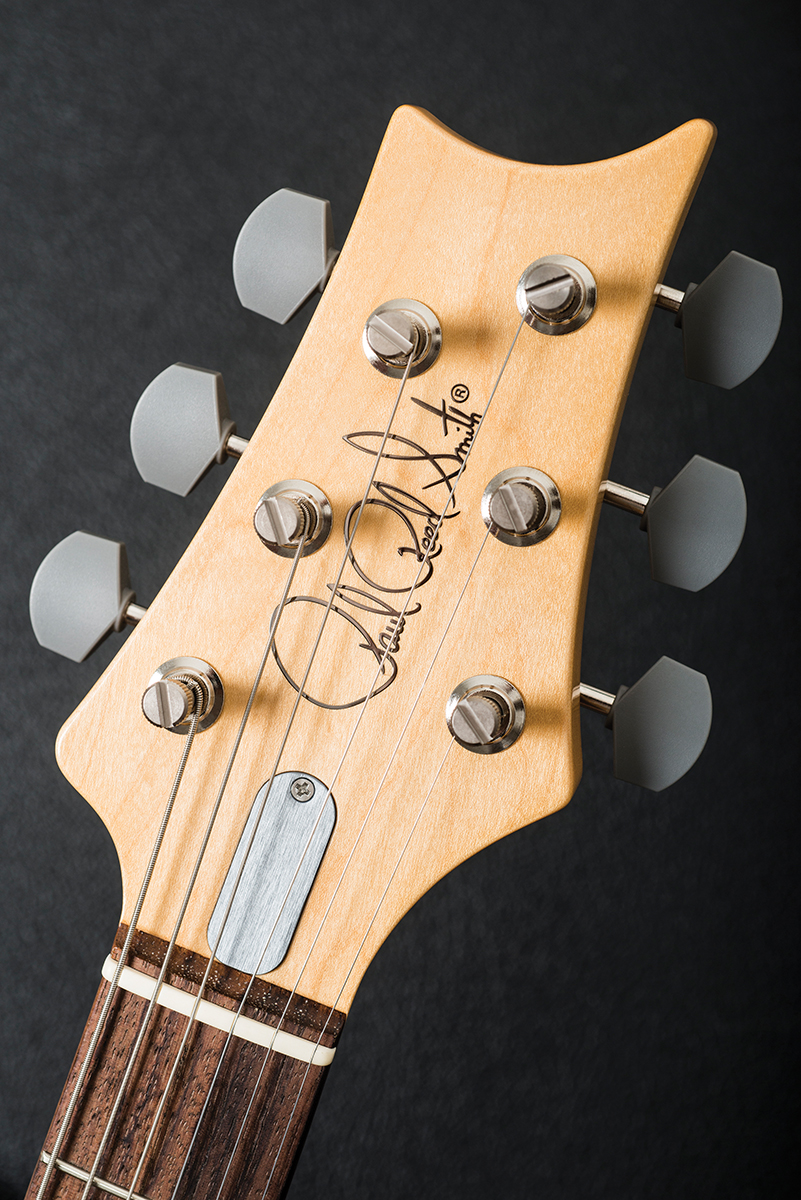
The Backstory
Let’s rewind the tape for a moment or two and remind ourselves how we got here. Since the release of his debut LP Room For Squares in 2001, John Mayer has sold 10s of millions of albums, won seven Grammy Awards and received an incredible 19 nominations. His musical journey has seen him excel as an acoustic singer-songwriter and demonstrate breathtaking ability as a blues-rock guitarist, participating in a variety of genre-hopping collaborations along the way. For a man who only turned 40 in 2017 he’s packed an awful lot in – and that’s before you consider the forays into writing, stand up comedy, horology and plenty more besides.
The Connecticut-born Montana resident has been a dyed-in-the-wool Strat player for many years and his first signature Stratocaster was released in 2005. However, October 2014 saw Mayer’s relationship with Fender hit the rocks. “Heads up to anyone thinking about owning my signature Fender Stratocaster,” he tweeted. “They’re no longer being made and I’m no longer a Fender artist.”
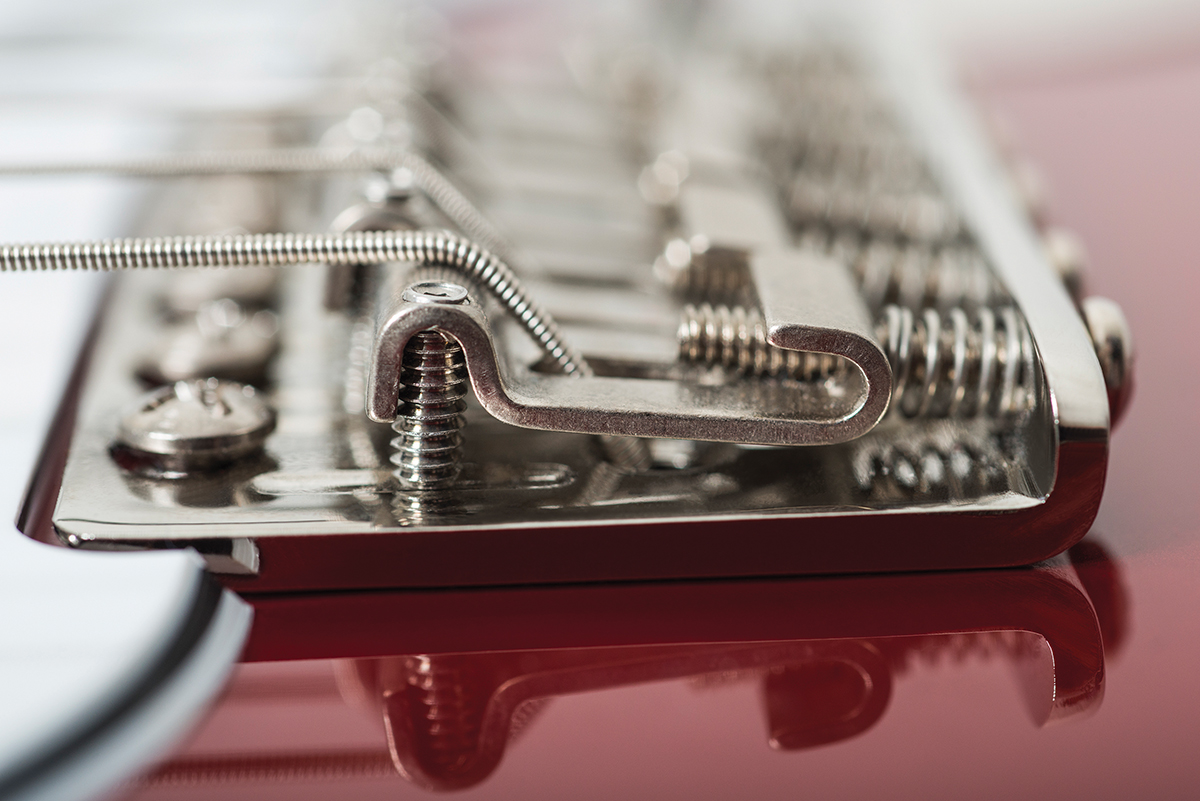
It was a very public break up, but by 2015 he’d found a new collaborator in the shape of Paul Reed Smith. The first fruits of Mayer and Smith’s relationship came in 2016 in the form of the Private Stock Super Eagle – a super-exotic high-end model limited to just 100 pieces worldwide, and designed for use in Mayer’s Dead & Company project, which saw the guitarist take the stage alongside former members of the Grateful Dead.

January 2017 saw PRS and Mayer unveil the J-MOD 100 signature amp in front of a throng of journalists at the Winter NAMM show and then in June, the Private Stock Super Eagle II arrived with updated woods and aesthetics. The price tag was an eye-watering £10,995 and production was limited to just 120 instruments.
Both Super Eagle models are extraordinary guitars with interesting specifications including a 25.375-inch scale length, ultra-versatile switching and an onboard preamp. But all the while, Mayer and Smith were working on an electric guitar design that was more traditional, more accessible and with genuine mass market appeal.

Although the combination of photographs of prototypes being put through their paces at gigs, rogue news outlets breaking embargoes and Mayer himself teasing the instrument on social media meant that the public were primed for its release, when the PRS Silver Sky was officially unveiled to the world in early March it made the kind of waves that went beyond the wildest dreams of even the most ambitious marketing department.
Time to open the commemorative hard case (in which the first 500 examples of this much talked-about guitar will make their way to market) and see what all the fuss is about.

The Guitar
In a 40-minute Instagram Live video that streamed in the days following the Silver Sky’s launch, as well as providing an extensive demonstration of his new guitar’s capabilities, Mayer remarked that he “had an idea for a guitar – and this goes back about 10 years – a guitar that is sort of the future of the classic design”. First impressions of our review model, in its Tesla-inspired Horizon red metallic finish, are of an instrument that takes many cues from the Stratocaster, but also includes nods to modernity and several features that are synonymous with PRS.
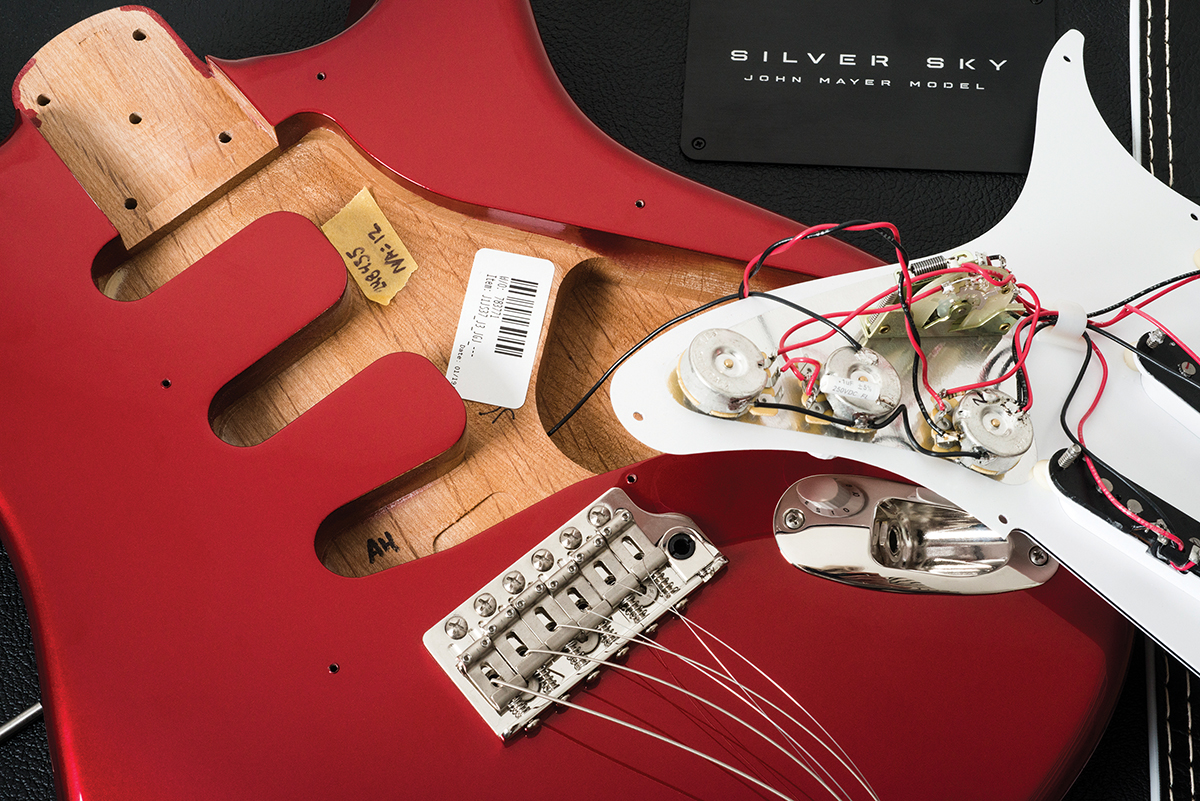
Of course, it’s not the first time that Smith has designed a three-single coil, bolt-on neck, alder body electric, and in hindsight 2010’s DC3 (whose ergonomic pickup selector switch tip survives on the Silver Sky) feels like an evolutionary step towards this much more Fender-like PRS. Mayer’s own pre-CBS guitars were key reference points during the design process, so for the purposes of this review we compared the Silver Sky to a 1963 Stratocaster owned by a member of The Guitar Magazine team.
Weighing in at 7.4lbs, the Silver Sky is a little lighter than our 7.7lbs reference guitar, while the PRS has a slightly slimmer 215mm waist versus the Strat’s 225mm. The 455mm body length of both guitars is approximately the same, while the body thickness of both tops out at 44.6mm.

The Silver Sky’s ribcage contour isn’t as dramatic as the vintage instrument’s, scooping out to a depth of around 24mm compared to the Strat’s 18mm before the edge radius comes into play. The forearm chamfer is also less pronounced, with the PRS body reaching its full depth just past the strap button (which is the familiar PRS type that began life when Paul used Fender bass string trees found on his repair bench) while the Fender continues to widen up to a point in line with the centre of its volume knob.

The biggest departure at the body end of the equation is the scoop in the Silver Sky’s treble horn, which aside from being a stamp of PRS identity on an otherwise very Strat-like body aids access all the way up to that 22nd fret and is even painted a subtly darker accent colour to make it stand out more. The heel is also more rounded and although there’s a small gap between the body lip and the neck on the treble side of the pocket that it’s possible to slide a piece of paper into, we’ve encountered monster-sounding vintage bolt-ons that have considerably bigger gaps around the neck join.
When you remove the neck and scratchplate, other than a little bleed around the edges, there’s no finish in the neck pocket or pickup and control routs, which should aid resonance. The body’s finish is typically PRS and consists of a polyester base and acrylic urethane top coat, while the neck is finished in clear nitrocellulose.
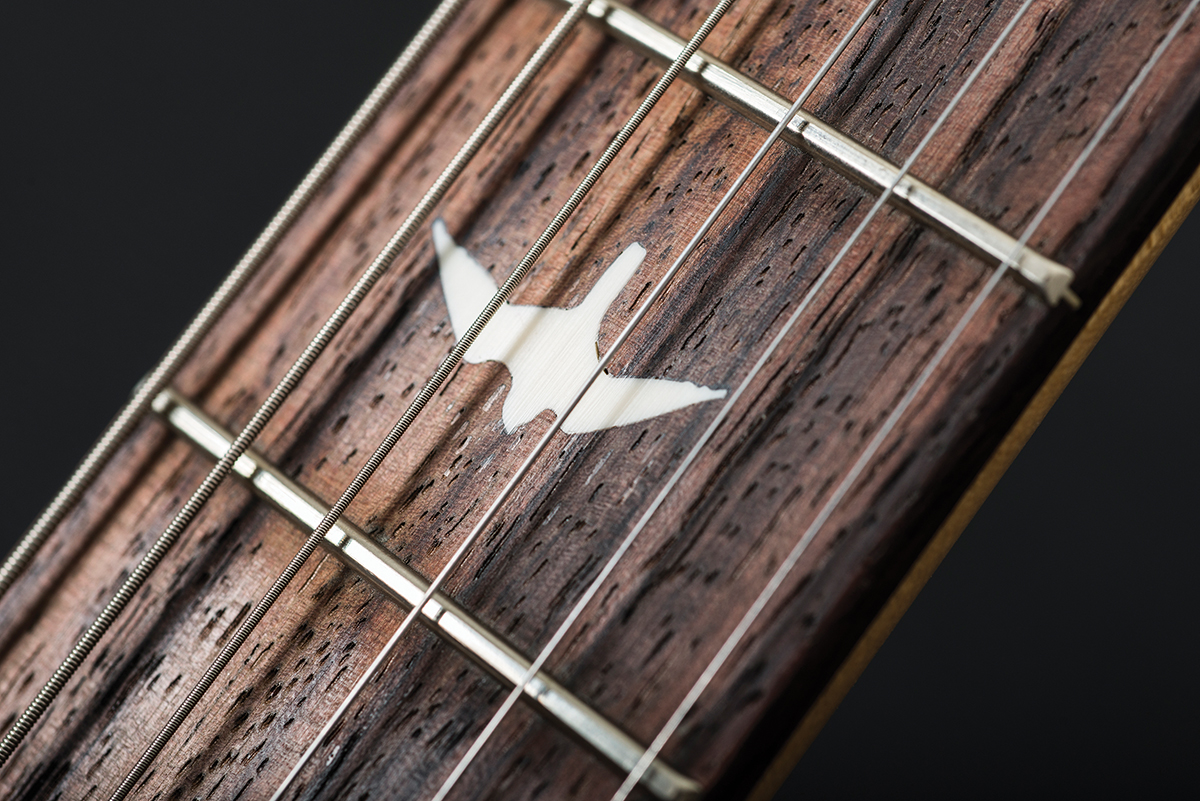
Smith has described the Silver Sky’s 635JM neck profile as “splitting the difference between a ’63 and a ’64 carve”, but perhaps one of the most contentious aspects of the guitar as far as the online reaction to it is concerned is the 7.25-inch radius rosewood fingerboard with its Small Bird inlays. Early Silver Sky prototypes apparently featured 8.5 and 8.25-inch boards but Mayer eventually settled on a vintage-style 7.25-inch curve.
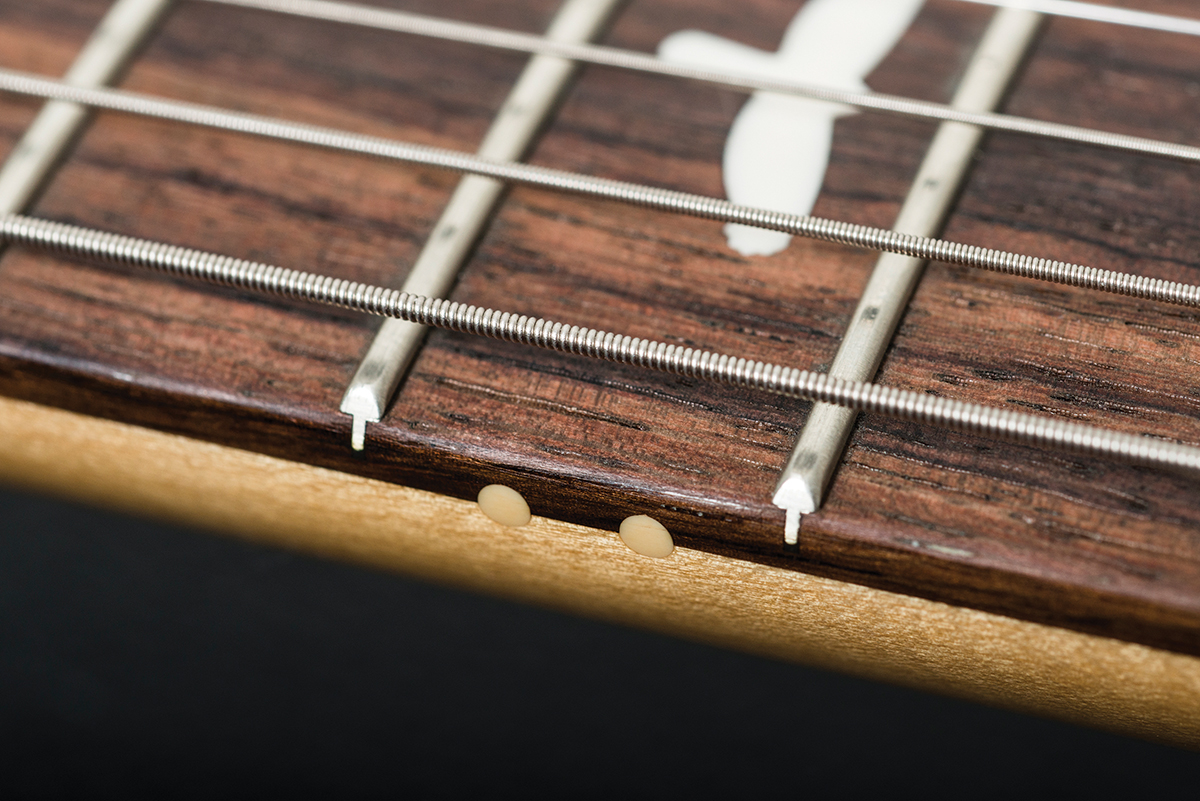
Although received wisdom suggests that the combination of a medium-low action and big string bends might lead to problems with fretting out in certain positions, thanks to PRS’s approach to fret levelling, performance is trouble free, and even when we try to trip the guitar up with some huge bends, it doesn’t blink. When we canvassed the opinion of highly technical players accustomed to much flatter ’boards, the Silver Sky didn’t present any problems – blues-rockers certainly shouldn’t have any trouble when bending strings here.
The Silver Sky apparently ships with some of the most specific set-up guidelines of any PRS to date, which includes the vibrato being set for downward travel only. This is intended to help sonically by coupling the bridge plate to the body when the bar isn’t in use. PRS says: “By keeping the bridge in contact with the body, the guitar itself is acoustically louder, which improves the signal to noise ratio of the single-coil pickups.” If you prefer a floating set-up then that’s easily achievable too – we don’t notice a significant increase in noise when putting his to the test, but the guitar possibly offers a little additional treble zing when configured this way. It’s very subtle.

At the headstock end, there’s a bone nut attached with hide glue, while the headstock shape itself went through “25 redraws”, and PRS even approached external industrial design companies during the process. Mayer and Smith finally settled on a design that feels Strat-like in the area behind the nut, but offers optimal string length to aid tuning stability and road-friendly headstock-end adjustment for the double-action truss rod.
It’s very much still a PRS design, albeit one that’s reversed to balance harmoniously with the body horns. The tuners blend vintage and modern as the closed-back units feature PRS’s locking mechanism, while the guitar’s 22 ‘Acoustic’ frets are slightly larger than vintage Fullerton spec, but smaller in both height and width than the majority of other PRS electrics.

In Use
Dimensionally, the Silver Sky feels very similar to our pre-CBS guitar with an almost identical width at the nut, while the neck’s rounded shoulders are supremely comfortable, as are the fingerboard’s softened edges. The profile evokes the right period without being too skinny down behind the first and second fret, where a scarf joint creates the headstock’s back angle. Whether you are playing with a thumb over the top – as is Mayer’s general way of doing things – or prefer to play full barre chords, you are unimpeded, and the immaculately installed and dressed fretwire definitely helps with clarity and note definition.
Plugged in for a listening test while surrounded by some trusted ears, the first response we hear is, ‘Wow, it sounds like a pre-CBS Strat’. The original 1963 guitar has a little more of a phasey quality, with a more complex sheen of high end harmonics and more of a hint of natural chorus, but the similarities between the two far outweigh their differences. The Silver Sky has a little more definition, less noise and less fogginess – it’s really like putting on a new pair of your favourite shoes rather than trying on a different style altogether.

The revoiced highs were a personal preference that came directly from Mayer, who would often run his old Strats with the tone controls rolled back to five as a starting point “because there was so much extra high end harmonic stuff that I didn’t like.” With the Silver Sky, “at 10 it might be a little extra treble than you need in certain situations but it’s not this unusable, unattractive treble stuff.”
“It’s got that warmer thing for me that I really like,” he continues. “The high end isn’t multiples of overtones high end that hits you in the ear, it’s actually very musical high end that has low end in it. The high end has low end and the low end has high end. It’s kind of a higher definition Strat to me. I wanted to go in and take out a lot of those frequencies you have to work to roll off.”

Comparisons aside, the Silver Sky really is an extraordinarily expressive instrument in its own right – you can hear how different parts of your pick or thumb change the front end of the note. There’s huge variation depending on where you strike the string, and that’s all before you flip the pickup selector switch away from the neck position. When you do, the balance between the Silver Sky’s pickups is very good indeed – you don’t switch to the bridge or in-between positions and find weakness, and none of the switch’s five positions are indistinct or lacking in output level.
Set up as supplied from the factory there’s just the right amount of fight and bounce from the 0.010 gauge strings. Each voice glitters with harmonic interest and there’s an explosive, dynamic snap and punch to the guitar that suits stinging lead breaks and choppy, percussive funk rhythms.
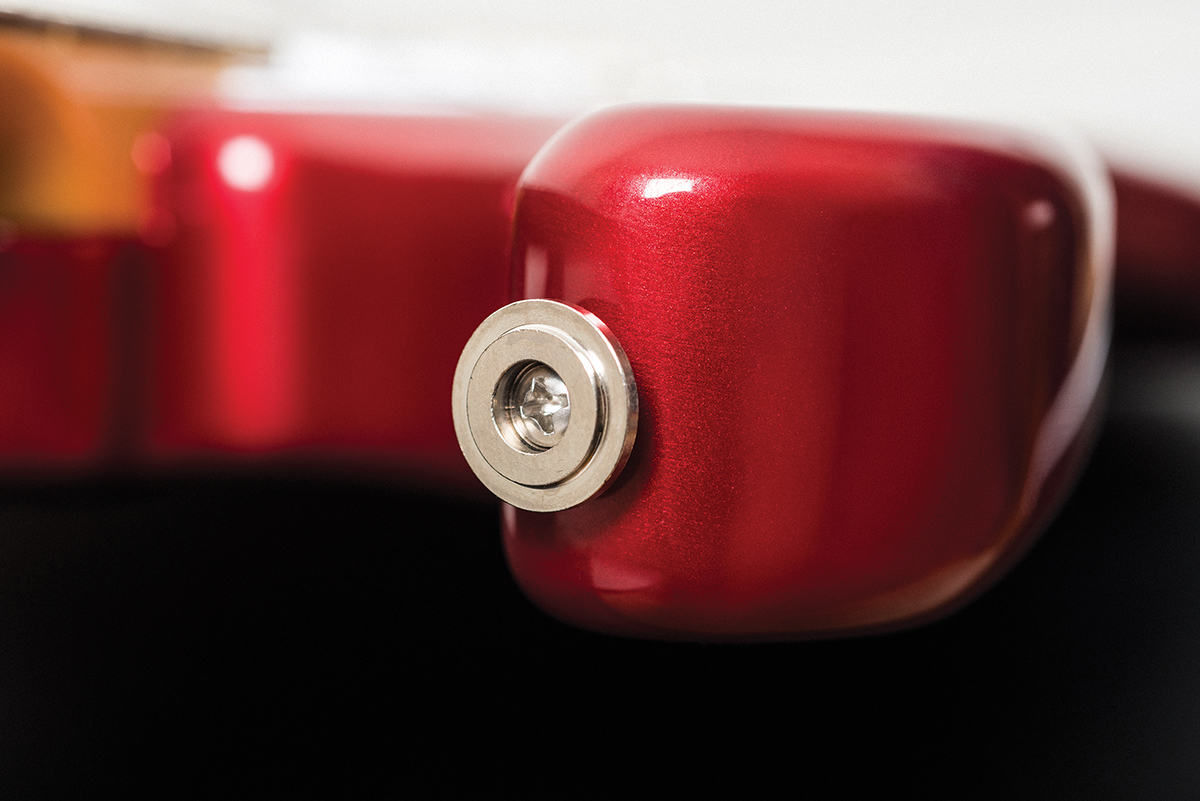
PRS isn’t the first company to take the blueprint of a pre-CBS Stratocaster and address the issues that can make them tricky beasts to tame while out on the road facing changing levels of heat and humidity. What’s different about the Silver Sky is that it retains the spirit of what makes players gravitate towards those iconic guitars in the first place and throws PRS’s formidable manufacturing consistency into the mix.
Mayer himself has indicated that more finish options and a maple ’board version of the Silver Sky are “very, very likely” at some point in the future, so don’t expect this to be the last word from a collaboration that has already changed the conversation in the modern electric guitar industry.

KEY FEATURES
PRS Silver Sky
• PRICE £2,299 (first 500 include hardshell case, following models ship in premium gigbag)
• DESCRIPTION Solidbody double-cutaway electric guitar. Made in USA
• BUILD Alder body, bolt-on maple neck with 7.25” rosewood slab fingerboard, 22 ‘Acoustic’ frets, bone nut and Small Bird inlays, double-action truss rod with headstock-end adjustment
• HARDWARE Locking vintage-style closed-back tuners with non-slip buttons, PRS Steel Tremolo vibrato bridge
• ELECTRICS 3x PRS 635JM single-coil pickups, 5-way blade pickup selector switch, master volume, neck/middle tone control, bridge tone control
• SCALE LENGTH 25.5”/648mm
• NECK WIDTH 41.6mm at nut, 52mm at 12th fret
• NECK DEPTH 22.0mm at first fret, 24.5mm at 12th fret
• STRING SPACING 35.0mm at nut, 53.8mm at bridge
• WEIGHT 7.4lb/3.4kg
• FINISH Body: Polyester base coat, acrylic urethane top coat, neck: nitrocellulose. Available finishes: Horizon (as reviewed), Tungsten, Frost, Onyx
• CONTACT PRS Europe 01223 874301, www.prsguitars.com




